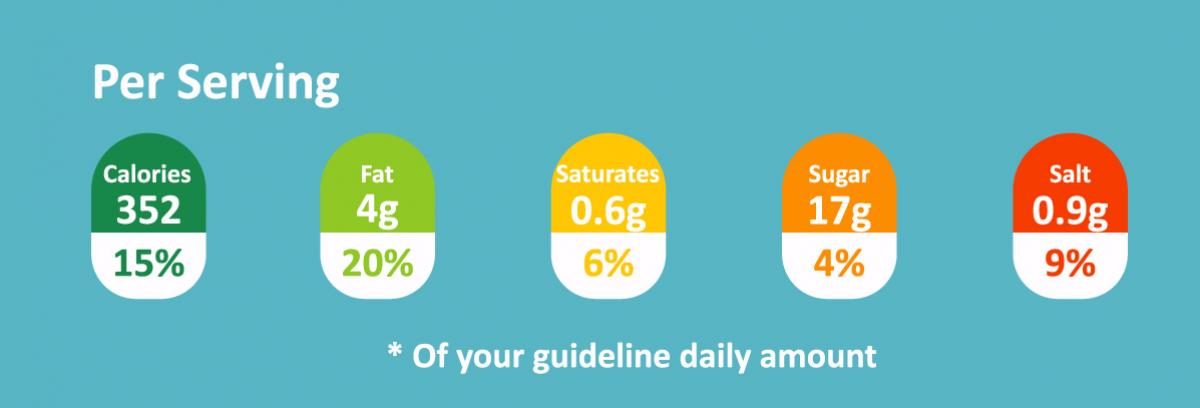
GUIDELINE VALUES FOR ADULTS AND CHILDREN
January 12, 2021
|
7 min
Do you want to know how many nutrients you should be consuming each day? Guideline values provide information about the recommended daily intake of calories and specific nutrients for people in good health. When planning your daily meals, it helps to compare nutrient values in products using guideline values – which food and drink manufacturers print on packaging – for the benefit of your health.
HEALTH: WHAT SHOULD WE EAT AND DRINK?
Health and nutrition are areas which are very closely linked. Every day, we think about what we should eat and what is healthy. We need a balanced and varied diet to keep fit, but what does such a diet include? And what benefits does our food provide? The food pyramid can point us in the right direction. It gives each food group a specific value in our daily diet. The nutritional information on food packaging can also be helpful. However, this information is not always clear or easy to understand. What good is knowledge about the number of calories or the nutritional content of a food product if we do not know the recommended daily intake of calories and nutrients? Ideally, information on product packaging should be clear, be based on scientific knowledge and allow us to make easy and well-informed decisions.
INFORMATION: NESTLÉ PROVIDES SUPPORT
To help you to ensure that you and your family have a balanced daily diet, Nestlé has introduced or will introduce – Guideline Daily Amounts (GDAs) on our packaging. You will be able to see the percentage of your required daily calories and percentage of key nutrients provided by the food or beverage. You can use these values to help plan your meals using our products. To keep our bodies balanced at all times, what we eat and drink should correspond to the recommended intake volumes.
NUTRITIONAL REQUIREMENTS: EVERYONE IS DIFFERENT
The exact daily requirements for calories and nutrients vary from person to person, as they are influenced by numerous factors. Among other things, body size, weight and gender have a major influence. Your personal needs also depend on your physical activities. Active people who exercise a lot require significantly more energy than people who barely move. The information we provide on our packaging is therefore based on average values and should only be used as a guide. It does not correspond to your own personal requirements.

GUIDELINE VALUES: BASIS OF RECOMMENDATIONS
As we are unable to print specific values for each individual on our packaging, calculations are based on average values. The guideline values for adults are mainly geared to the scientifically-based information provided by Eurodiet. The Eurodiet project coordinates preventative health nutrition programmes in the EU member states and is funded by the European Commission.
The values for children are based on the recommendations for five-to-ten-year-olds from the Institute of Grocery Distribution (IGD), the largest information, research and educational institution for food in Great Britain. They represent a standard that is accepted across the whole of Europe. As Eurodiet does not provide any details about calorie intake, we based our values on the usual requirements for a healthy non-sedentary woman who is not pregnant and who is over the age of 18 with a low level of physical activity. This is equivalent to around 2,000 kcal per day.
The majority of scientists, e.g. those in Germany, the EU and the USA, agree on this value. The so-called D-A-CH reference values 1 also recommend an average of approx. 2,000 kcal per day for women with low activity levels. The table provides an overview of the guideline values as shown on food product packaging in Europe. Some of these are minimum values, e.g. for fibre, and maximum values, e.g. for fat and sodium (salt). 1The "D-A-CH reference values" are the standard reference points for nutrition recommendations in German-speaking countries, which the institutes for nutrition in Germany (DGE), Austria (ÖGE) and Switzerland (SGE and SVE) have issued jointly.
GUIDELINE VALUES FOR ADULTS AND CHILDREN
Sources: EURODIET (2001) Nutrition & Diet for Healthy Lifestyles in Europe. Core Report, IGD GDA Technical Working Group